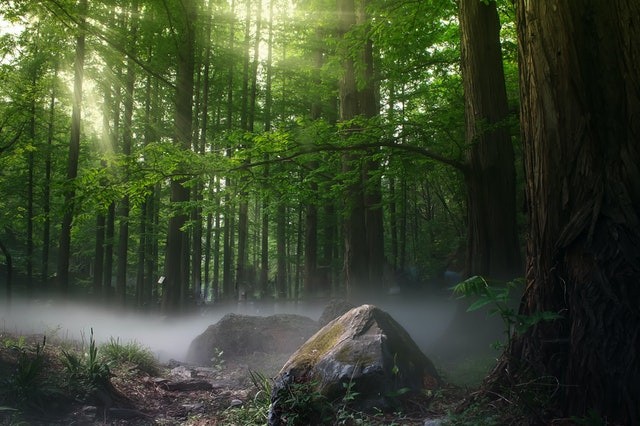A recently published study in the proceedings of the National Academy of Sciences by renowned Professor Richard Thomas and alumnus Justin Mathias, (BS Biology '13 and Ph.D. Biology '20) has shown astounding revelations about trees in climate change.

According to their study, an increase in the efficiency of trees in the use of water has been disclosed to be caused by an increase in carbon dioxide in the atmosphere over the past centuries. In the words of Professor Thomas, "This study highlights the role of forests and their ecosystem in climate change."
In the study, he spoke about the services provided by the forests to the ecosystem, which can be classified into different areas - recreation, timber, and industry. However, what has appeared to be the most important and greatest service to the ecosystem is the forests' consumption of large amounts of carbon dioxide globally. He mentioned that where this consumption had not occurred, the carbon dioxides would mostly find their way into the atmosphere and settle there, worsening the situation of climate change in our world.This shows yet another important reason to preserve and maintain our forests, keeping them healthy all the time.
ALSO READ - Natural Forest Regeneration: Better than Tree Planting?
Previous Studies About the Correlation of Trees to Climate Change
In previous studies and researches, scientists have been of the thought that trees used water efficiently through the process of stomatal conductance - a process where these trees stored up moisture when the pores on their leaves began to close. This is less noticeable under rising levels of carbon dioxide.
However, recent studies have shown through the use of an analysis that made use of carbon and oxygen isotopes in tree rings from 1901 to 2015, and from 36 tree species at 84 sites around the world. In 83% of cases, water efficiency in trees have always been due to increased photosynthesis. Meaning that the trees processed more carbon dioxide. The rest of the 17% increase most times had been discovered to have occurred as a result of stomatal conductance; a glaring reflection of the contrast with previous research.

Apart from these results portraying a rise in carbon dioxide as the major factor in making trees use water efficiently, a variation exists which hinges on temperature, dryness of the atmosphere, and precipitation. These findings can be of immense help in predicting the effects of climate change on carbon globally, as well as water cycles. Mathias, lending his thoughts, posited that a correct representation of what may happen in the future also edges us closer to making those predictions less uncertain.
Giving a brief talk about himself, Mathias had also expressed how his work had taken another turn upon his relocation to California. From being in the field, collecting measurements, analyzing data, and writing manuscripts, he has hinted that his new position is now more focused on ecological theory and ecosystem modeling. He has expressed a desire to run his lab at the university, mentor graduate students, and delve further into research questions to build on the ones already propounded.
RELATED ARTICLE: llegal Logging Threatens Old Growth Forests of Romania
For more news, updates about climate change and similar stories, don't forget to follow Nature World News!
© 2025 NatureWorldNews.com All rights reserved. Do not reproduce without permission.





